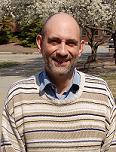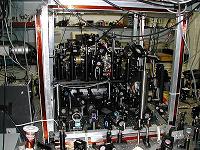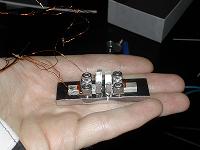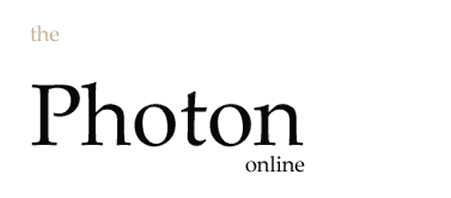Quantum Optics at UMD 
By: Dr. Luis A. Orozco
About one hundred years ago Einstein used the idea of the quantum of energy from Planck to explain the photoelectric effect. Shortly afterwards, Stark remarked that the same quantum carried momentum. Gilbert Lewis coined the word photon to express the quantum of light in 1926 and the developments of quantum mechanics that followed gave us quantum electrodynamics as one of the pillars of physics.
The discussion of the wave-particle duality, that has included many scientists such as Newton , Fresnel, Poisson and Maxwell, received a revival with the firm establishment of the photon as the quantum of light.
The argument of wave versus particle is resolved in quantum electrodynamics by a formalism that combines both of these aspects. The formalism is fundamentally statistical and, as with quantum phenomena in general, it is through statistical uncertainty, fluctuations, that the wave and particle natures of light sit self-consistently side- by- side. The solution carries other consequences that were not imagined before quantum mechanics; most notably, the answer depends on the detection process and the detection process affects the object we are trying to measure. An interference detector enhances the wave's nature of light, while a photon counter shows preferentially the particle's nature.

xxFluctuations and noise are intrinsic to light and their study has shown many xxfascinating aspects of the quantum world. The characterization of noise is xxusually made by making correlation measurements to find how random it is. xxWhen talking about photons, the minimum fluctuation in the number of xxphotons is one. Counting the distribution of photons shows that some light xxcarries fluctuations that are Poissonian in nature; the uncertainty is just the xxsquare root of the number of photons counted. The fractional noise or xxuncertainty can be very small if the number of photons is large, but for weak sources, such as a single atom, the fluctuations can be very large.
Quantum mechanics tells us that there will be fluctuations in the amplitude (wave) and fluctuations in the intensity (particle). It is interesting then to study correlations between pairs of photon detections (particle aspect of light), measure the fluctuation variance of the wave amplitude of light (squeezing) and correlate photon detection with the fluctuations of the electromagnetic wave amplitude. These conditional measurements are unique in the way they prepare a quantum system and even allow for quantum feedback.

Experiments in my Quantum Optics group addresses these issues using axx cavity quantum electrodynamic (QED) system as source. It consists of twoxx very highly reflecting mirrors facing each other and a few atoms. We drivexx the cavity with a laser beam and detect the light (wave and particle) emittedxx by the atoms or leaking out of the cavity to better understand the fluctuationsxx and the quantum noise of light.
Dr. Orozco is a professor for the University of Maryland. He is a member of the Atomic, Molecular and Optical Physics group. Visit the group website at : http://www.physics.umd.edu/rgroups/amo/orozco/index.html
or contact him at, lorozco@physics.umd.edu .
|





